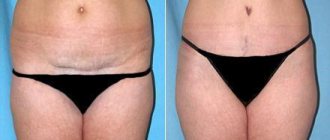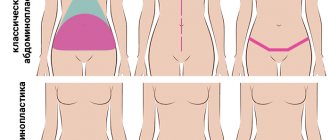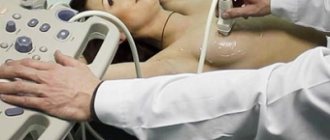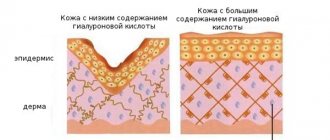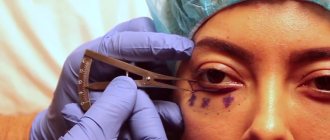Vaginoplasty: all about the operation in Kyrgyzstan
One of the most popular types of intimate plastic surgery, in addition to operations to restore virginity, is vaginal plastic surgery. Such intervention is indicated when problems arise in sexual life due to vaginal enlargement after childbirth or genital prolapse (prolapse or prolapse of the pelvic organs).
What types of operations exist in Kyrgyzstan? How much do they cost? Who are they contraindicated for? Kaktus.media about this
I spoke with a doctor - obstetrician-gynecologist, Professor Arsen Askerov.
Why are surgeries performed?
– There is a good saying: a person’s success depends on his sexuality. Therefore, women turn to us when they really need to tighten the vagina or improve the position of the pelvic organs, and so on.
Penis enlargement is unlikely; there is more opportunity to work with a woman’s sexual organ. And do plastic surgery that will help improve future relationships between a man and a woman, which will have a positive effect on the quality of life. Let's say a couple is active, they want a bright relationship, but the wife, due to her reproductive function, has lost this brightness.
There is a trend abroad: women prefer a cesarean section rather than a vaginal birth, because they do not want to expand the birth canal and lose the elasticity of the perineum.
What types of operations exist
It depends on the violation.
Genital prolapse has different degrees, from mild to severe. I note that it can affect a woman at any age: even young women may not notice that they have the initial symptoms of genital prolapse - prolapse of the vaginal walls.
This is facilitated by various reasons related to both childbirth and the woman’s lifestyle: eating disorders, obesity, sedentary lifestyle... Some women may not notice the symptoms and present very late - at an advanced stage, when a much more complex operation is required.
There are different models of plastic surgery: outpatient and inpatient.
Outpatient surgery
It is carried out at the initial stage and moderate degree of prolapse according to the type of lifting (tightening), for this purpose special threads and needles are used. These operations do not even require deep anesthesia in the deep layers of muscles, because the needles are very thin and sharp, the threads are also special, they do not cause an allergic reaction.
The operation is carried out quickly. A skilled surgeon does this in 5-7 minutes. To carry out the intervention, no additional tests, examinations, or anesthesia are required.
In moderate to severe cases, plastic surgery
. This type of intervention has also undergone changes. If previously such operations required a large number of tests, preparation, enemas, diets, and so on, now, thanks to new approaches and suture materials, the surgeon can create a good frame on the perineum and at the entrance to the vagina and strengthen the vaginal walls.
What tests are required?
Now only the most necessary tests are required: blood for syphilis, HIV and hepatitis B, a general blood and urine test, as well as tests showing the normal functioning of internal organs: analysis for creatinine, sugar and bilirubin in the blood. This will make it possible to determine whether the organs are functioning normally, that they were not damaged after the operation, that is, changes in them, if any, are not related to the operation.
Colposcopy is also performed before surgery. This is due to an increase in underlying cervical diseases, precancerous diseases and cervical cancer itself. If cancer is detected, the patient is redirected to the Oncology Center.
For whom operations are contraindicated?
Of course, these are patients with cancer that affects the cervix, vagina... These are diseases of a hematological nature (diseases of the blood system). This is an infection that also needs to be treated and plastic surgery postponed.
There is one more feature: women think that the vaginal problem is purely anatomical, but many have underlying conditions that require correction.
For example, poor nutrition, which causes varying degrees of obesity, which can lead to relapse after surgery because there is pressure on the vagina, bladder and pelvic floor. Therefore, in addition to interventions, we also correct the patient’s lifestyle and prevent other diseases.
It is also important to take mental problems into account. I have had several cases where women had psychosocial problems in the family - conflict with their husbands, lack of personal fulfillment, and so on. All this led to the fact that, despite plastic surgery, the woman developed a somatoform disorder.
This is a condition when there is no disease, but the woman still finds its symptoms, and she is sure that she has the disease, despite examinations that refute this. In this way, the patient sometimes wants to attract the attention of relatives and doctors.
We are now developing a test that will help determine this condition, and before taking such patients for surgery, such patients should be consulted by at least a psychologist.
Cost of the operation
The cost varies and depends on the operation model. In private clinics – from 20 to 55 thousand soms.
About the rehabilitation period
Rehabilitation also depends on the type of surgery.
Outpatient lifting does not require changes in behavior, changes in body position, and so on. You can sit down, drive a car, continue to work, and even give birth vaginally.
During radical surgery, which specifically involves the tissues of the vagina, involving the bladder, anus, changes in position are required (patients should avoid pressure on the perineal area for 20 days and remain in a vertical or horizontal position). For the first two or three days, it is advisable not to contact the laundry.
Patients come for dressing changes once a day. The external genitalia are treated with ordinary antiseptic solutions, and after a week we sometimes give certain vaginal gels containing medicinal herbs and oils to improve healing and regeneration. To support the vaginal microflora, we also recommend suppositories containing lactic acid bacteria.
Then, naturally, muscle training is recommended. Nowadays, vaginal simulators of various modifications have appeared, and a woman can undergo outpatient rehabilitation to strengthen the muscles of the vagina and perineum.
Source: https://kaktus.media/doc/390198_yspeshnost_cheloveka_zavisit_ot_ego_seksyalnosti._vrach_ob_intimnoy_plastike.html
Efficiency
Abdominoplasty is more justified for women who have given birth repeatedly. The effectiveness of the operation depends on many factors and rules that the patient must follow.
If the level of the clinic in which the operation was carried out is distinguished by the high quality of the work of surgeons, the latest equipment, innovative methods of diagnosis and procedures, then the effectiveness of plastic surgery will not be long in coming.
All patients wishing to undergo such a procedure need to understand that the duration of the effect also depends on their own contribution to the preservation of the figure after the operation.
After it, you need to wear a specialized bandage for a period of 1 to 1.5 months. Compliance with a rational daily routine and nutrition is another component of the effectiveness of the postoperative period for abdominoplasty.
Plastic surgery after childbirth – appointment with a plastic surgeon – “Scandinavia” Kazan
Stretch marks, skin “apron”, sagging breasts and excess fat are almost inevitable consequences of childbirth. Diets and sports training cannot always cope with them. Plastic surgery can restore the firmness of the breasts, the contours of the abdomen and the normal shape of the genitals.
If a woman has had a perineal incision (episiotomy) after childbirth, then the geometry of the perineum changes and rough scars remain. Perineoplasty—perineal plastic surgery—helps restore the normal shape of the intimate area and get rid of discomfort.
Intimate plastic surgery is indicated for stretching or prolapse of the vaginal walls, prolapse of the bladder and urinary incontinence, pain during sex, vaginal dryness, and deformation of the labia.
Surgeries in the intimate area last 1-2 hours, the recovery period is about a month. During this time, you need to give up sex, going to the sauna, tight underwear, tampons and sports. The final appearance of the genitals takes place several months after the operation.
The operation is performed under general anesthesia and lasts 2-3 hours. A breast lift can be performed simultaneously with breast reduction or augmentation, as well as tummy tuck.
Program “Beautiful Mom”
Pay attention to the “Beautiful Mom” package. It includes breast lift and tummy tuck. Carrying out both operations is simpler (one anesthesia and one rehabilitation period) and cheaper. If separately a breast lift and tummy tuck will cost 270 thousand, then together it will cost 250 thousand.
Postpartum indications for abdominoplasty include stretch marks, abdominal wall muscle separation, and cesarean section scars. The operation allows you to remove excess skin, tighten muscles and restore the contours of the abdomen.
During a tummy tuck, the surgeon strengthens the muscles using special threads, removes excess fat, tightens the skin and repositions the belly button. With abdominal surgery, it is possible to move the C-section scar below the bikini line.
Before
After
Before
After
If you only need to tighten the skin, a mini-abdominoplasty is performed - surgery in the bikini area without moving the navel.
When there is divergence of the rectus abdominis muscles and prolapse of the anterior abdominal wall, endoscopic abdominoplasty is performed. The operation takes place without incisions through small punctures above the pubis and in the navel area.
Any type of tummy tuck is performed under general anesthesia and lasts about three hours. The operation is carried out no earlier than six months after the end of feeding.
Tummy tuck can be performed in conjunction with liposuction. If the skin is elastic enough, the fat retained after childbirth on the hips, buttocks and other parts of the body can be pumped out through thin needles, without major surgical intervention.
After a caesarean section, transverse or longitudinal scars remain on the abdomen. They are usually thick and rough because gynecologists apply stitches in a single layer rather than in layers. In this case, the scars become depressed.
In this case, the plastic surgeon excises the skin of the scar and applies new stitches that will look more aesthetically pleasing. If the scar is thin, you can improve its appearance with lipofilling.
Before
After
Before
After
More details
Correction of scars and scars
After consultations with a plastic surgeon and related specialists, it is necessary to undergo blood clotting tests, tests for HIV and hepatitis, undergo fluorography and an ECG. All tests can be taken at once in one building within a few days.
“Scandinavia” (Ava-Kazan) uses Sevoran gas anesthesia, thanks to which patients after surgery do not feel headaches, drowsiness, loss of concentration and other unpleasant consequences of anesthesia.
In most cases, the patient should spend the first day after surgery in the clinic. The Scandinavia wards (Ava-Kazan) with their own shower are equipped with wi-fi, comfortable beds and a nurse call button. Individual rooms are suitable for those who want to hide their stay in the clinic.
Plastic surgery is not performed for bleeding disorders, diabetes, oncology, mental illness and infections.
Price list for plastic surgery after childbirth
| Resection of the labia minora (1 side) | 15000 |
| Soft tissue plastic surgery (body lifting) | 140000 |
| Plastic surgery of soft tissues (body lifting in combination with dorsoplasty) | 190000 |
| Plastic surgery of soft tissues (body lifting in combination with gluteoplasty, with the cost of implants) | 250000 |
| Excision of skin and subcutaneous fat of the anterior abdominal wall (Miniabdominoplasty) | 75000 |
| Excision of the skin and subcutaneous fat of the anterior abdominal wall (Abdominoplasty with umbilical ring transfer) | 120000 |
| Excision of the skin and subcutaneous fat of the anterior abdominal wall (Abdominoplasty with transfer of the umbilical ring and suturing of diastasis of the rectus muscles) | 140000 |
*prices are for Individuals
+ Show all
Source: https://ava-kazan.ru/structure/plasticheskaya-khirurgiya/plastika-posle-rodov/
Indications and contraindications for surgery
Abdominoplasty helps to correct the shape of the abdomen if there are any problems and reduce its size. Basically, such an intervention is relevant after a pregnancy that ends in a caesarean section. This type of operation in the world of plastic surgery is considered to be the most difficult.
To create a beautiful stomach, with a thin waist and well-defined abdominal muscles, surgeons will need to perform the work for four hours, and sometimes longer. Then it will take some time to restore your health and a slight restructuring of the muscles located in the waist area, since the nature of movements after abdominoplasty changes slightly.
Reducing the vaginal opening
One of the most popular areas of plastic surgery is now intimate plastic surgery, which allows eliminating both aesthetic and functional defects of the genital organs. Vaginoplasty, including reduction of the vaginal opening, has been successfully performed at the Mother and Child clinic for a long time and helps the clinic’s patients solve delicate problems.
The vagina is a section of the internal genital organs of a woman, which serves for sexual intercourse and the birth of a child. Normally, the vagina looks like a slit, and its walls practically touch each other.
However, often after childbirth or with age, the entrance to the vagina can widen and then during sexual intercourse there will not be sufficient fit and girth of the partner’s penis and, as a result, the quality of sexual intercourse and sexual satisfaction will greatly decrease.
Reduction of the vaginal opening is a surgical operation performed in the upper layers of the vagina and aimed at restoring the functionality of the female genital organ.
The main reason for the enlargement of the vaginal opening is natural childbirth. In order for a child to pass through the birth canal and be born, the body increases the diameter of the vagina, but the walls do not always retain their elasticity and are able to return to their previous state after childbirth.
In some cases, this may be due to hormonal disorders or a decrease in the degree of contraction of vaginal muscle fibers due to a large number of postpartum scars.
Stretched tissue at the vaginal opening primarily worsens the quality of a woman’s sexual life and entails psychological difficulties, and can also cause certain diseases (urinary incontinence, uterine prolapse, etc.).
Indications for surgery
- congenital structural anomalies;
- stretching of the vaginal opening after childbirth;
- prolapse of the vaginal walls;
- rupture of the internal walls;
- scars at the site of ruptures after childbirth, causing pain during sexual intercourse;
- enlargement of the vagina due to age-related changes or hormonal disorders;
- prolapse and prolapse of the uterus;
- disorders of the genitourinary system (urinary incontinence), pain in the lower abdomen;
- psychological problems due to dissatisfaction with sexual life, including difficulty achieving orgasm and insufficient intensity of sensations during sexual intercourse.
Preparation for surgery to reduce the vaginal opening in “Mother and Child”
Before making a decision on surgical intervention, the gynecologist at Mother and Child will definitely prescribe a comprehensive examination of the patient, during which she will conduct a vaginal examination to assess the condition of the walls and opening of the vagina, including muscle tone. It is also necessary to have a conversation with an anesthesiologist to select the optimal option for pain relief, and to conduct a number of laboratory tests:
- general urine analysis;
- clinical and biochemical blood tests;
- blood test for HIV, hepatitis B and C;
- smear for the presence of infectious diseases of the vagina;
- coagulogram;
- ECG.
The doctor will definitely check that the patient has no contraindications to this type of surgical intervention, then talk about the method of operation, the expected duration, the type of anesthesia chosen and the characteristics of the rehabilitation period.
Contraindications
- disturbances in the functioning of the cardiovascular system;
- thrombophlebitis in acute form;
- venereal and inflammatory diseases of the genital organs;
- chronic diseases of internal organs in the acute stage;
- pathologies in the development of the pelvic organs;
- diabetes;
- blood clotting disorder;
- pelvic organ prolapse;
- oncological diseases;
- mental disorders.
All studies can be carried out at the Mother and Child clinic as soon as possible.
Surgery to reduce the vaginal opening in “Mother and Child”
The “Mother and Child” plastic surgery departments are equipped with everything necessary to use various vaginoplasty techniques. Experienced surgeons perform operations to reduce the vaginal opening, anterior and posterior colporrhaphy (suturing of the vaginal walls) in accordance with the objectives and the individual characteristics of the woman’s body.
Surgery to reduce the vaginal opening is usually performed under general anesthesia and lasts approximately 1 hour. If necessary, before the procedure, patients take muscle relaxants to achieve maximum relaxation of the vaginal muscles.
The operation involves partial excision and suturing of the mucous tissue of the upper layers of the vagina (the so-called vestibule), while scars that may have remained after childbirth are removed. The result of the procedure is strengthening and correction of the size of the vaginal ring.
However, narrowing of the vaginal opening is performed only if the walls have sufficient elasticity and muscle tone, otherwise colporrhaphy is necessary.
Colporrhaphy (anterior and posterior) – suturing of the vaginal mucosa. A cone-shaped incision is made on the mucous membrane of the posterior or anterior wall of the vagina and this area of tissue is removed, and the edges are tightened with cosmetic sutures, which leads to a decrease in the volume of the vagina.
The procedure is performed using epidural (spinal) anesthesia and lasts 1-2 hours, depending on the extent of the surgical intervention performed.
As a result of this operation, the muscles of the vaginal walls are strengthened, their elasticity improves and muscle tone increases, without leaving any scars.
Rehabilitation after surgery
Like any surgical procedure, vaginal plastic surgery requires a recovery period.
Typically, such operations are well tolerated, but, nevertheless, the first 2-3 days after the procedure are recommended to be carried out under the close supervision of Mother and Child specialists.
The wards of the Mother and Child hospital have everything necessary for a comfortable stay, and caring staff will help make the rehabilitation period easy and calm.
Surgery to reduce the vaginal opening usually involves sutures made from self-absorbing sutures, so they will not need to be removed. And due to the fact that the operation takes place on the mucous membrane, there are no scars left and the incisions heal very quickly.
Of course, the modern equipment of the Mother and Child clinics, the high qualifications and experience of surgeons reduce the risk of complications to almost zero. And in order to speed up the rehabilitation process as much as possible, patients need to follow the recommendations of the attending physician:
- observe bed rest in the first week after surgery, especially in the first 3 days;
- carry out regular antiseptic douching;
- follow the diet prescribed by the doctor;
- take painkillers and antibiotics prescribed by your doctor;
- do not sit in a sitting position for 1-2 weeks after the procedure so that the stitches do not come apart;
- refuse vaginal sexual intercourse for 1.5-2 months;
- limit heavy physical activity and sports, as this can lead to muscle strain and deformation of the seams (within 1-2 months);
- Get regular check-ups with your doctor.
The professionalism of the specialists of the Mother and Child clinics and the use of the latest methods and modern equipment in their work allow, in each individual case, to choose exactly the surgical technique that will provide the best results with complete safety and allow the patient to return to a happy, fulfilling life in the shortest possible time.
Source: https://mamadeti.ru/services/women-s-center/the-decrease-in-the-vagina/
Contraindications
The operation to correct the abdominal area is not easy and is traumatic, which is especially typical for grade 3-4 ptosis. Therefore, when prescribing abdominoplasty, contraindications to its implementation are also taken into account.
The operation cannot be performed at a time when any chronic diseases are aggravated, with colds, or any diseases of infectious origin. Caution should be exercised when prescribing surgery for women with pathological diseases of the thyroid gland or with diabetes mellitus. It is dangerous to perform surgical intervention when the disease is not fully compensated - this significantly inhibits wound healing and increases the risk of complications, sometimes causing infection.
There may be serious health problems if surgery is prescribed for women with diagnosed cardiovascular pathology or diseases of the respiratory system. The consequences may vary in severity. In this case, it is better not to prescribe surgery.
If disturbances in the process of blood coagulation are noted, decisions regarding the advisability of surgical intervention are made on an individual basis.
Plastic surgery after childbirth
You gave birth. Perhaps not the first time. And even if the baby was born without physical complications, your body has changed. You, of course, hope that everything will return to normal as soon as you finish breastfeeding your baby.
You do a set of exercises, train the muscles of the pelvis and abdomen and wait for the folds and stretch marks on the stomach to go away, the vagina to shrink (and the pleasure of sex to return), and the breasts to return to their previous shape. But nothing happens.
So what should I do? There are two options: the first is to accept it, the second is to undergo plastic surgery. And more and more women are choosing the second option.
Our interlocutor is a plastic surgeon with 20 years of experience Oleg Stasevich . He worked at the Center for Plastic and Reconstructive Microsurgery and interned in foreign clinics, in particular in Belgium, Italy and Finland.
Since 2011, he has been working in medicine, is a member of the Belarusian and Lithuanian societies of plastic reconstructive and aesthetic surgery and a national delegate from Belarus to the European Society of Plastic Reconstructive and Aesthetic Surgery. He has thousands of successful plastic surgeries behind him.
We talked with him about what women want after childbirth, what Mommy makeover operations are and whether it is possible to breastfeed after plastic surgery.
Oleg Stasevich Plastic surgeon
– How often do women come to you who are dissatisfied with their shape after childbirth?
- Every day. Every day a patient will definitely come and say that before pregnancy it was like this, but now it’s like this, but I want it to be like before. You explain to her that it won’t be the same as before, it’s physically impossible.
Previously, there was the aesthetics of a young, nulliparous girl, but now there is the aesthetics of a mature woman. Both can be called beautiful. Aesthetics is a matter of philosophy; body proportions are a matter of surgery. You just need to find a balance. It happens that the patient goes away to think and never returns.
But in general, few people are interested in philosophy.
– What problems are dealt with most often?
– In the first place is breast plastic surgery, in second place is plastic surgery of the abdomen and hips (abdominoplasty and liposuction, as well as operations for umbilical hernia), in third place are operations to correct the intimate area. With the first two points, I think everything is clear. But I’ll explain a little about the third point, because women are often afraid to discuss this topic even with themselves.
Often during childbirth, ruptures occur in the perineum and, as a result, scar deformities occur, and the elasticity of the tissues in this area changes. As a result, the appearance changes, the sensations from intimate life change, and women do not always come to terms with these changes. In this case, interventions combined under the name “aesthetic gynecology” help.
More specifically, this group includes the following operations: plastic surgery of the labia minora, labia majora, restoration of elasticity to the vaginal tissues. In general, aesthetic gynecology today is a very relevant area of aesthetic medicine. This is fashionable in the West, and it is also developing dynamically here.
Speaking of fashion. Now there is such a popular marketing ploy in many countries, mainly English-speaking ones, called Mommy makeover, i.e. literally - “bring mom back.”
This is a set of operations that is offered to women to return to their previous shapes, contours, and aesthetics. In this way, clinics sell a package of operations. This is not very popular here yet, but, as is usually the case, it will become popular in a couple of years.
In neighboring Lithuania, for example, this method of selling plastic surgery services is already actively used.
– How long after giving birth does it make sense to see a plastic surgeon?
– There is a general rule: all plastic surgeries are recommended to be carried out no earlier than 3-6 months after the restoration of the monthly cycle. And if a woman is breastfeeding, then after completion of lactation.
But you should keep in mind: if a woman plans to give birth again in the next year or two, then there is no point in plastic surgery, since there is a high probability that she will have to deal with the same problems again.
– Will a nulliparous girl who has undergone breast surgery be able to breastfeed her child in the future?
- If he wants, he can. The implant is placed under the breast tissue.
Of course, if implants are placed today, and a woman wants to breastfeed in 10-15 years, she may have a problem, because the implant purely physically puts pressure on the breast tissue and this causes it to become thinner and its blood supply changes.
But in most cases, implants do not interfere with lactation. And then, what girls come most often for this operation? Those who have practically no breasts. Of course, they need to do something, otherwise pregnancy may not occur (smiles).
– Breasts with implants will not change after childbirth and breastfeeding?
– If a girl was obese and lost weight, her breasts sagged, and the girl had a lift and inserted an implant, then after feeding the breasts will change. Such patients are usually not recommended to breastfeed precisely for the purpose of preserving the aesthetics of the breasts.
But from a humanistic point of view, I would not deprive the child of the joy of unity with his mother. Personally, I discourage such patients from surgery. I don’t refuse, but I try to inform as fully as possible. Some people listen, some don't.
But if we talk about those patients who had practically no breasts and that is why they resorted to such an operation, then the breasts will not sag after childbirth, the shape will not change.
I observed women who had such an operation, gave birth to their first, second or third child, successfully breastfed, and no correction was required.
– If a woman after a caesarean section has problems with her belly hanging over the suture, can this be solved?
– Yes, liposuction is performed around the scar using a laser, it is a simple operation. The only inconvenience is that you will need to wear the waist belt for some time.
– What if there are stretch marks left after childbirth?
– You can do something about stretch marks while they are pink, as a rule, this is up to a year from the moment they appear, sometimes less. Once the stretch marks turn white, there is nothing you can do about them. This is changed skin, the same aesthetics of a mature woman, you have to live with it. Stretch marks can be prevented. And you need to start early.
Pharmacies have special lines of products for stretch marks; they are not cheap, but worth it. By the way, a regular nourishing cream for “three kopecks” is better than no cream at all, it also “works”! It should be remembered that today the problem of stretch marks cannot be solved with the help of plastic surgery.
This is not only about Belarus - it is not being resolved anywhere in the world.
– Plastic surgery is an operation. Patients usually trust their doctor. But they check. They go to one, two, three, almost gathering a consultation to be sure that everything will be all right. What is the doctor thinking about at this time when he is performing the operation?
– About how to convince a patient to undergo surgery under general anesthesia. No matter how simple the operation is (even if it’s eyelid surgery), if we inject an anesthetic drug into the area being operated on, there is a risk of not getting the desired result, because with such an introduction, the area of our interest is inevitably deformed.
You always doubt it, because after the injection you receive already changed tissues. And under general anesthesia, the woman sleeps, and you work on unchanged tissue. I have been performing these operations for more than 18 years, I can compare. Operations performed under general anesthesia are more effective.
Many patients, and doctors too, misunderstand this point and are guided by the fear that after general anesthesia the patient may “not wake up.” But this is casuistry.
– Do plastic surgeons ever have funny cases?
– Plastic surgery, especially intimate surgery, is, of course, not a laughing matter. But sometimes so-called medical tourists come and ask to do everything at once.
Many years ago I had a patient on whom my colleagues and I spent half a day working magic. We did eyelid surgery, breast lift with implants, abdominoplasty, buttock surgery with implants and genital surgery in one sitting.
She was happy, but I was perplexed - what kind of joy is this? This is neither sitting nor lying down! (laughs).
– Those who are reading this interview may be trying the situation on themselves. And some of them think: plastic surgery after childbirth is for stars and wives of oligarchs, I can’t handle it. Is this a myth or is it really that expensive?
– It’s not as expensive as many people think. Prices in all clinics - both public and private - are approximately the same. And the licensing requirements for everyone are equally stringent. Therefore, it is not the price that matters, but the technical equipment and reputation.
QUESTION PRICE
Breast lift - 1.5-2 thousand rubles. Breast correction with implants without lifting - 5-6 thousand rubles. Abdominoplasty - 4-5 thousand rubles. Umbilical ring (belly button) surgery - from 500 to 1.5 thousand. rub.
Plastic surgery of the labia minora – 1-1.5 thousand rubles.
unsplash.com
(26 9,38 out of 10) In order to rate a post, you must be a registered user of the site. Loading…
Source: https://mamapro.by/pro-mam/plastika-posle-rodov/
Complications
Complications after tummy tuck are divided into two types: general and local . Common ones include:
- Swelling of the respiratory tract.
- Development of intra-abdominal hypertension.
- Hypostatic pneumonia.
- Abdominal syndrome.
Local:
- Seroma.
- Severe suppuration of the wound.
- Swelling of soft tissues.
- Seam rupture.
- Loss of sensation.
Complications can always be prevented if you follow a few simple rules - you should forget about smoking, alcohol, junk food at least a month before surgery, follow the recommendations of doctors, some of which are presented in the “rehabilitation” paragraph of our article, and observe bed rest.
Intimate plastic surgery after childbirth: procedure with photos
After childbirth, unexpected problems often arise - stretch marks, tears and injuries to the birth canal, as well as scars and scars on intimate parts of the body. This negatively affects female beauty and reduces the quality of sexual life. This is why many mothers strive to hide or correct acquired defects.
In this case, intimate plastic surgery comes in handy. It can not only restore the aesthetic appearance of the body, but also relieve the inconvenience caused.
In what cases is intimate plastic surgery required after childbirth?
Intimate plastic surgery after childbirth is a common practice in medical practice, as can be judged by the number of photos on the Internet. The operation allows you to prevent the penetration of bacteria into the body by eliminating skin defects formed as a result of rupture of the perineum or dissection of tissue, as well as visually improve the appearance of the genital organs.
Plastic surgery is prescribed for women who have the following problems:
- low elasticity of the skin folds of the external genitalia;
- excessive stretching of vaginal tissues;
- prolapse of the genitals or their too large size;
- increased uterine tone;
- pain in the lower abdomen during sexual intercourse, playing sports or sitting;
- low quality of sexual life;
- congenital pathologies of the genital organs.
Types of procedures
There are 2 types of intimate plastic surgery: labiaplasty and vaginoplasty. The first procedure is indicated mainly for restoring the appearance of the external genitalia, i.e. changing their size and shape, removing skin folds, eliminating congenital pathologies.
Vaginoplasty (colpoplasty) is an operation whose indications are dysfunctions of the perineum. It is performed in case of damage received during childbirth, or to restore and improve the ability to receive sexual pleasure.
To restore the appearance of the external genitalia
There are the following types of plastic surgery to restore or change the appearance of the genitals:
- Contour plastic surgery of intimate areas. Allows you to adjust the size of the vagina, labia, clitoris and G-spot.
- Intimate plasma lifting. Required for rejuvenation and elimination of postpartum skin defects of the perineum.
- Liposuction of the pubic area. This is the surgical removal of fat deposits. The procedure is recommended not only for postpartum changes, but also for hormonal imbalances, however, the main indication for the operation is the woman’s dissatisfaction with the appearance of the perineal area.
To restore perineal function
Basically, colporrhaphy is used for this. Thanks to such plastic surgery, it is possible to eliminate sagging, reduce volume, strengthen the walls and eliminate scars at the entrance to the female genital organs. Colporrhaphy also allows you to get rid of:
- urinary and gas incontinence;
- pain during sexual intercourse;
- discomfort during bowel movements;
- inflammation of the vulva and vaginal mucosa.
Algorithm for the procedure
Before starting the perineal correction procedure, the doctor sends the patient for a diagnostic examination (ultrasound of the pelvic organs, ECG, etc.), as well as blood and urine tests. If the results are within normal limits, a date for the operation is set.
As a rule, plastic surgery is performed in a hospital. Before starting the procedure, the doctor determines the area with which he will work. In most cases, it is treated with an antiseptic to prevent infection, and the woman is offered an anesthetic to reduce pain.
Depending on the type of plastic surgery, it is performed surgically (liposuction, colporrhaphy) or using intradermal injection (contour plastic surgery, plasma lifting), for which the following are used:
- special medications, for example, hyaluronic acid;
- patient's plasma.
After the operation, the woman is advised to abstain from sexual activity for a month, and is prohibited from playing sports, lifting weights, or visiting the pool. This is necessary to eliminate the risk of developing unwanted complications.
When is intimate plastic surgery contraindicated?
Intimate plastic surgery, like any other gynecological operation, is not suitable for all women. There are a number of contraindications, which can lead to serious complications:
- hereditary and acquired blood diseases (hemophilia, anemia, hemorrhagic diathesis, etc.);
- heart failure;
- mental disorders;
- infectious diseases of the genital organs (vaginitis, candidiasis, cystitis);
- oncological diseases;
- gestational diabetes mellitus.
Possible complications
Typically, complications appear within the first few days after surgery. The most common are bleeding and increased body temperature. Problems such as suture dehiscence or infection are often observed if perineal plastic surgery was performed immediately after childbirth.
Also, depending on the individual characteristics of the woman’s body, the presence of concomitant disorders of the systems and organs, as well as the qualifications of the surgeon, the following complications may arise:
- hematomas;
- pain in the pubic or abdominal area;
- swelling;
- allergic skin manifestations, such as rash or itching.
Dermatitis, bruising and pain usually resolve on their own within 7-14 days without treatment. Only in rare cases can a doctor prescribe analgesics, angioprotectors, antihistamines and capillary stabilizing agents to relieve unpleasant symptoms.
Swelling and bleeding often occur due to excessive tissue growth, which is influenced by the characteristics of the patient’s body and her lifestyle. That is why, for the purpose of prevention, before and after the operation, doctors recommend temporarily quitting smoking and drinking alcohol.
Is it possible to give birth after intimate plastic surgery?
High-quality intimate plastic surgery does not affect pregnancy and childbirth. Women can give birth naturally without any complications.
However, it is important to remember that after childbirth, there is a high probability that not a trace will remain of the results of the plastic surgery performed. The fact is that new stretch marks, tears and injuries to the birth canal, scars or cicatrices may occur. In this case, the woman will have to choose between the beauty of her body and the birth of a baby.
Source: https://www.oldlekar.ru/rody/posle/intimnaya-plastika-posle.html
Preparatory stage
Preparation for tummy tuck after childbirth consists of several stages. The initial examination is carried out at the initial consultation with the surgeon. The specialist collects anamnesis, assesses the condition of the anterior abdominal wall, diagnoses a hernia and diastasis (if present). The doctor must check the presence of chronic diseases, previous infections and operations. Before abdominoplasty you must:
- take tests for laboratory blood testing to determine blood type, Rh factor, blood clotting level;
- general urine analysis;
- electrocardiogram;
- provide the result of fluorography;
- Ultrasound for suspected hernia and diastasis.
A couple of weeks before surgery, it is recommended to go on a light diet to prepare the intestines and lose some weight. You need to eat low-calorie, low-fat foods, drink more fluids and adhere to a fractional diet. Prohibitions before surgery:
- stop taking blood thinning medications 10 days before;
- do not smoke or drink alcoholic beverages;
- Avoid physical activity for 3 days;
- The day before you cannot eat or drink, the manipulation is carried out on an empty stomach.
Before the operation, it is necessary to take a shower, and for particularly impressionable patients, the doctor prescribes mild sedatives - tincture of motherwort or valerian.
Alternative Non-Surgical Methods
Non-surgical tummy tuck methods are considered an alternative to abdominoplasty - they are safe, but not as effective. The most effective include:
- Exercises . A woman can do yoga, swimming, and cardio training. It is important that exercise is regular and combined with proper nutrition. Physical activity on the body after a caesarean section is possible only after 6 months. It is important to obtain permission from a gynecologist to lead an active lifestyle so that training does not negatively affect rehabilitation and lactation.
- Creams. They help strengthen the skin, increase its elasticity, and lose weight. Such products are applied every day in a thin layer using basic massage movements. The results will not be pronounced and will appear only after 6 months from the start of the course. Experts recommend using creams only as an aid; the main emphasis should be on diet and exercise.
- Massage. It is advisable that the procedure be performed by a specialist - he will be able to influence the tightening of the dermis, and not its overstretching. During manipulation, be sure to use cosmetic oils that nourish the cells of the epidermis and accelerate the process of improving its elasticity and firmness. Massage is done in courses of 10-15 sessions, once every 3 months.
Abdominoplasty after cesarean section is the best option for a woman to restore the beauty of her figure after childbirth. The operation is associated with a certain risk, but a competent surgeon and strict adherence to the doctor’s recommendations during recovery are the key to obtaining the desired result.
How to tighten your skin at home?
To tighten your tummy without surgery, you should perform a number of physical exercises:
- wall squats - the exercise is performed like regular squats, but with a straight back pressed tightly against the wall;
- plank - the body is held on arms bent at the elbows and toes for the maximum amount of time;
- on the press - lying on your back, you should raise your body, while your legs are firmly pressed with your feet to the floor;
- swings - you should sharply throw your arms to the sides, while turning your body alternately left and right.
In addition, you must follow a diet - try to eat no more than one and a half thousand calories per day. The menu must contain protein foods, and it is advisable to completely exclude quickly digestible carbohydrates.
It is important to drink enough fluids - if the body receives less than 1.5 liters of water per day, the process of tightening the skin on the abdomen may be delayed.
- https://BezDiastaza.ru/plastika-zhivota-posle-rodov
- https://plasticology.ru/abdominoplastika/posle-rodov/
- https://beautyexpert.pro/hirurgiya/abdominoplastika/posle-rodov.html
- https://iplastica.ru/korrekciya-figury/zhivot/plastika-zhivota-posle-rodov-foto-do-i-posle.html
- https://kesarevo.online/abdominoplastika-zhivota-posle-kesareva/
- https://nkclinica.ru/korrekciya-figury/abdominoplastika-posle-rodov.html
